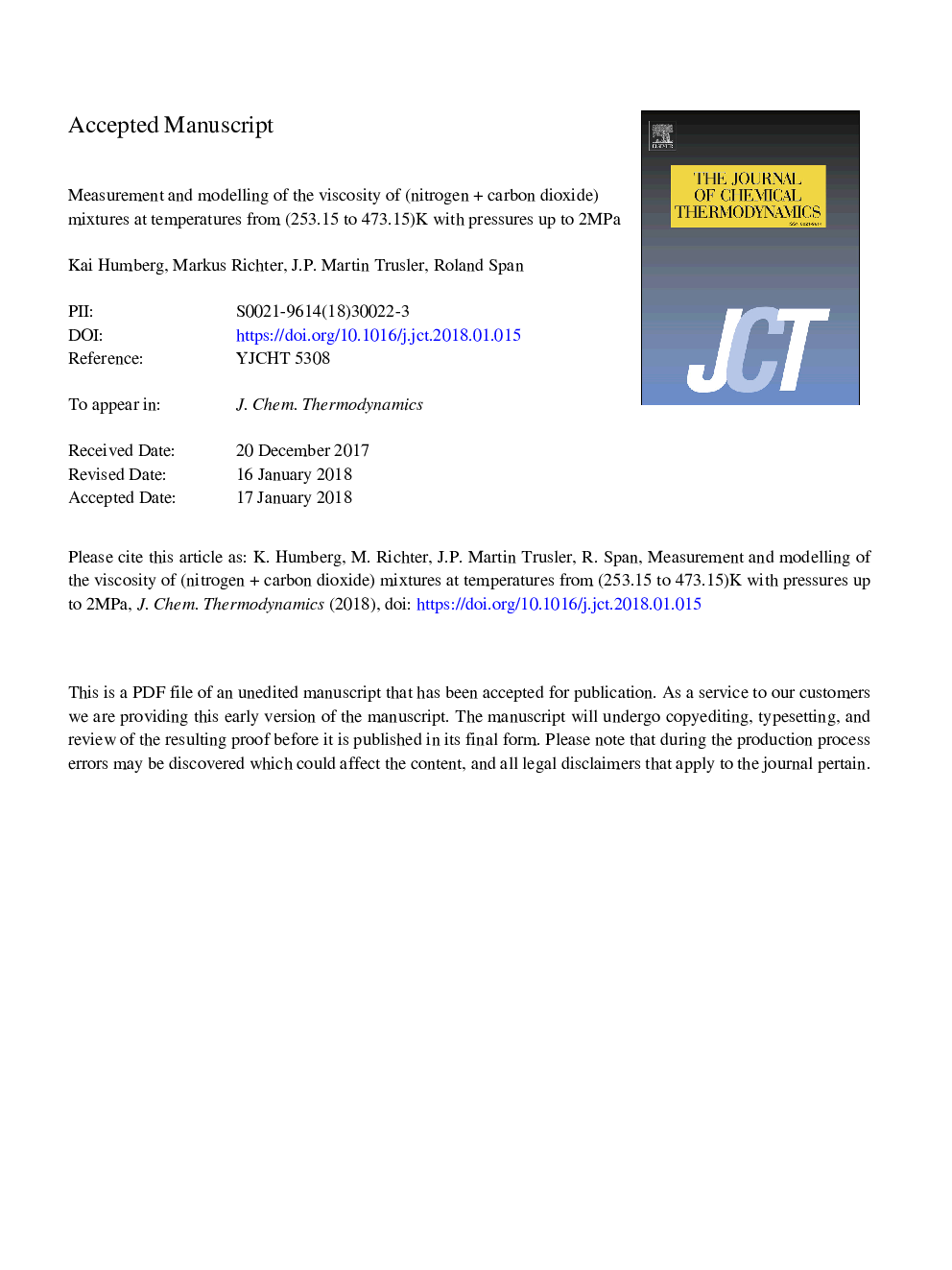| Article ID | Journal | Published Year | Pages | File Type |
|---|---|---|---|---|
| 6659782 | The Journal of Chemical Thermodynamics | 2018 | 59 Pages |
Abstract
The viscosity of pure nitrogen and of three (nitrogenâ¯+â¯carbon dioxide) mixtures was measured over the temperature range from (253.15 to 473.15)â¯K with pressures up to 2â¯MPa utilizing a rotating-body viscometer. The relative combined expanded uncertainty (kâ¯=â¯2) in viscosity was estimated to be between (0.14 and 0.19)% for nitrogen. For the binary gas mixtures, the uncertainty ranged between (0.19 and 0.39)%. The new data for nitrogen show very good agreement with experimental data from the literature and with recent ab initio calculations. The experimental data for the binary mixtures were compared with an Extended Corresponding States (ECS) model as implemented in the NIST REFPROP 9.1 database. The relative deviations of the data from the model were generally found to increase in magnitude with increasing density and ranged between (â2.1 and 0.4)% near the greatest density studied. The experimental data were correlated using the modified Enskog theory for hard sphere mixtures correct to the second viscosity virial coefficient. In this analysis, the effective hard-sphere diameters determining (a) the zero-density viscosity and (b) the leading term in the radial distribution function at contact were correlated as functions of temperature. The resulting model was found to represent all measured data with absolute relative deviations < 0.3% for the binary mixtures and < 0.2% for the pure fluids. This implies that the model reproduces or predicts respectively all experimental viscosity data within their experimental uncertainties.
Keywords
Related Topics
Physical Sciences and Engineering
Chemical Engineering
Chemical Engineering (General)
Authors
Kai Humberg, Markus Richter, J.P. Martin Trusler, Roland Span,
